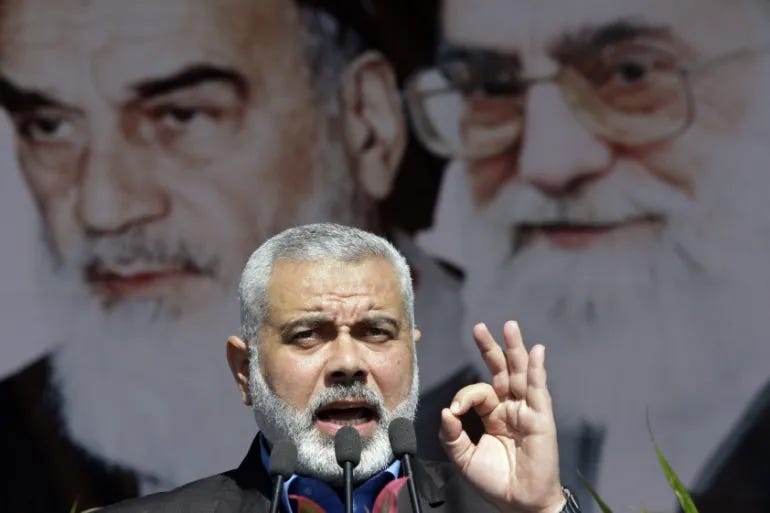Hamas and Iran as Enemies: Revisiting the Alliance Post-Assad
Assad’s fall and Hezbollah’s decline have reemphasised Tehran’s sectarian regional agenda, putting its alliance with Hamas in question.
The portrayal of Hamas as a puppet of the Iranian regime is popular and convenient rhetoric, but the reality is not as straightforward. Hamas's collaboration with the Islamic Republic has been restricted to shared concerns, though with differing motives. For example, both have worked together to undermine Israeli military hegemony in the region. However, Hamas strongly opposed Bashar al-Assad’s regime in Syria, while Iran defended it. The fall of Assad and the killing of Nasrallah have recentered the focus on Tehran’s regional sectarian project, casting doubt about the longevity of its ties to Hamas and other Palestinian militant groups.
Militaristic Foundation Against Ideological Divides
The Iran-Hamas relationship stems from the refusal of Arab countries to militarily assist Palestinian militant resistance. Tehran supported Hamas in its military efforts to challenge Israel, partly as a way to counter accusations of sectarianism against the Islamic Republic. However, the financial support provided was limited, with the focus primarily on technology sharing and training. To put it into perspective, Iran invested far more in the Syrian conflict than in supplying Hamas with weapons.
Following the Arab Spring, Hamas largely viewed Iran as supportive of counter-revolutionary efforts. The perception in Gaza was that Tehran sought to introduce sectarianism into the unrest and supported anti-Islamist narratives, framing them as a threat to regional stability. This is because militant Sunnism poses a threat to Iran’s project for regional Shiite hegemony, its victories would undermine Tehran’s regional influence.
After years of civil war in Syria, Hamas and the former Assad regime attempted rapprochement. Efforts were supported by Hezbollah's Nasrallah, with the late Yahya Sinwar making significant strides to reconcile in preparation for a regional war for Jerusalem. However, Assad reportedly remained unmoved, considering Hamas traitors due to their political support for Syrian rebels.
Post-Assad Goodbyes?
Following Assad’s ousting, Hamas is now confronting Iran as an adversary—one that is once again demonising Sunni Islamism. The war exposed Iran’s unwillingness to confront Israel; its actions during the conflict were reduced to mere theatrics that exposed a lack of commitment. As of now, Tehran’s motive seems to have been to use the resistance narrative as rhetoric for its sectarian project.
Hamas’ attempt to solidify an Axis of Resistance in the aftermath of 7 October was met with an Iran opposed to regional change. Regional regime change has become a central element of Hamas’ liberation project, and Tehran’s short-sighted goal appears to have been to gain a puppet. Nonetheless, this disillusionment stands to empower Hamas.
Moving forward, the Palestinian group will struggle to defend Iranian sectarianism. Currently, the two are enemies with differing ideological objectives: Hamas aims to see Sunni political Islam dominate the region, while Tehran pushes for counter-revolutions through sectarian regimes and their remnants.



